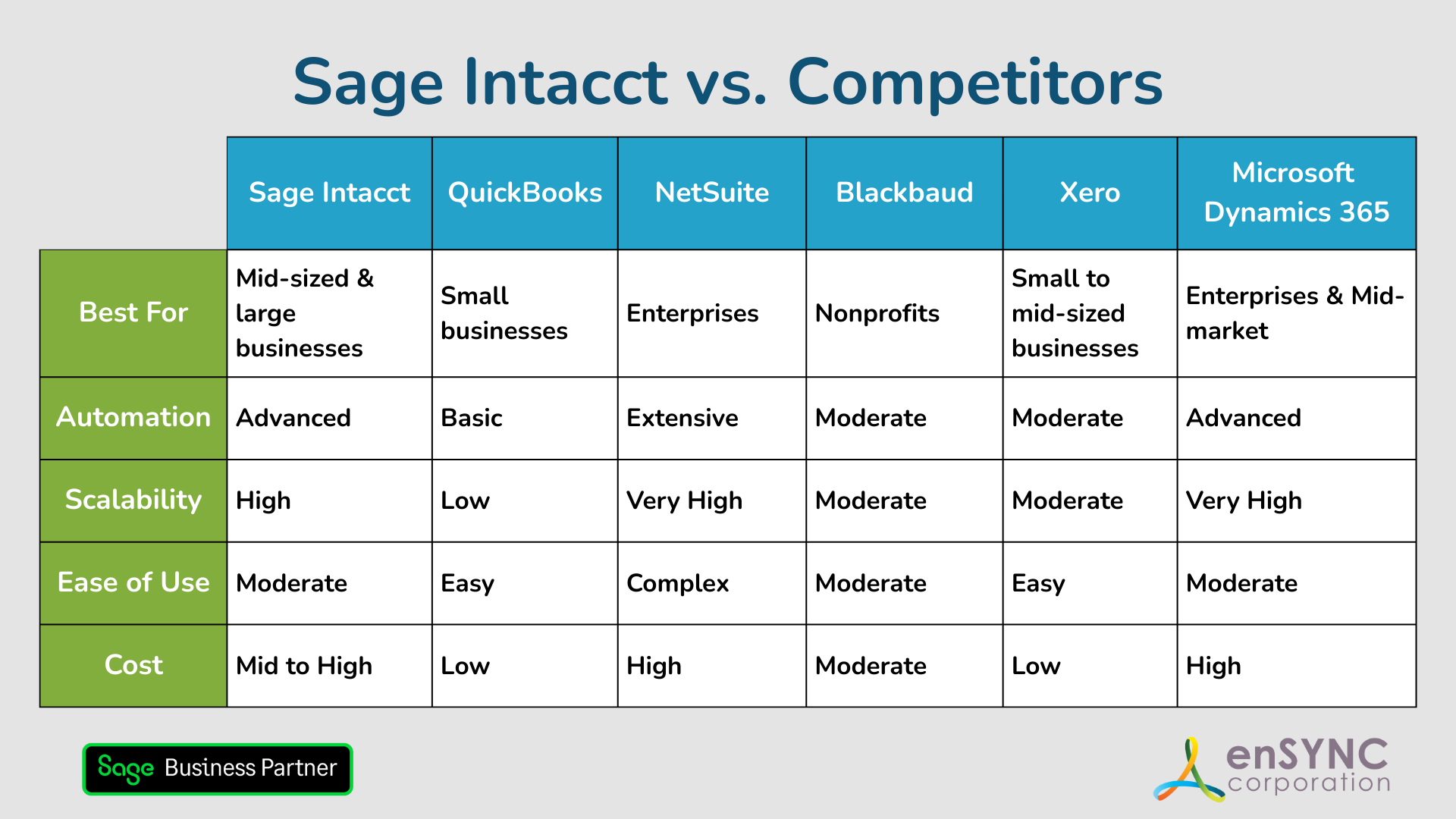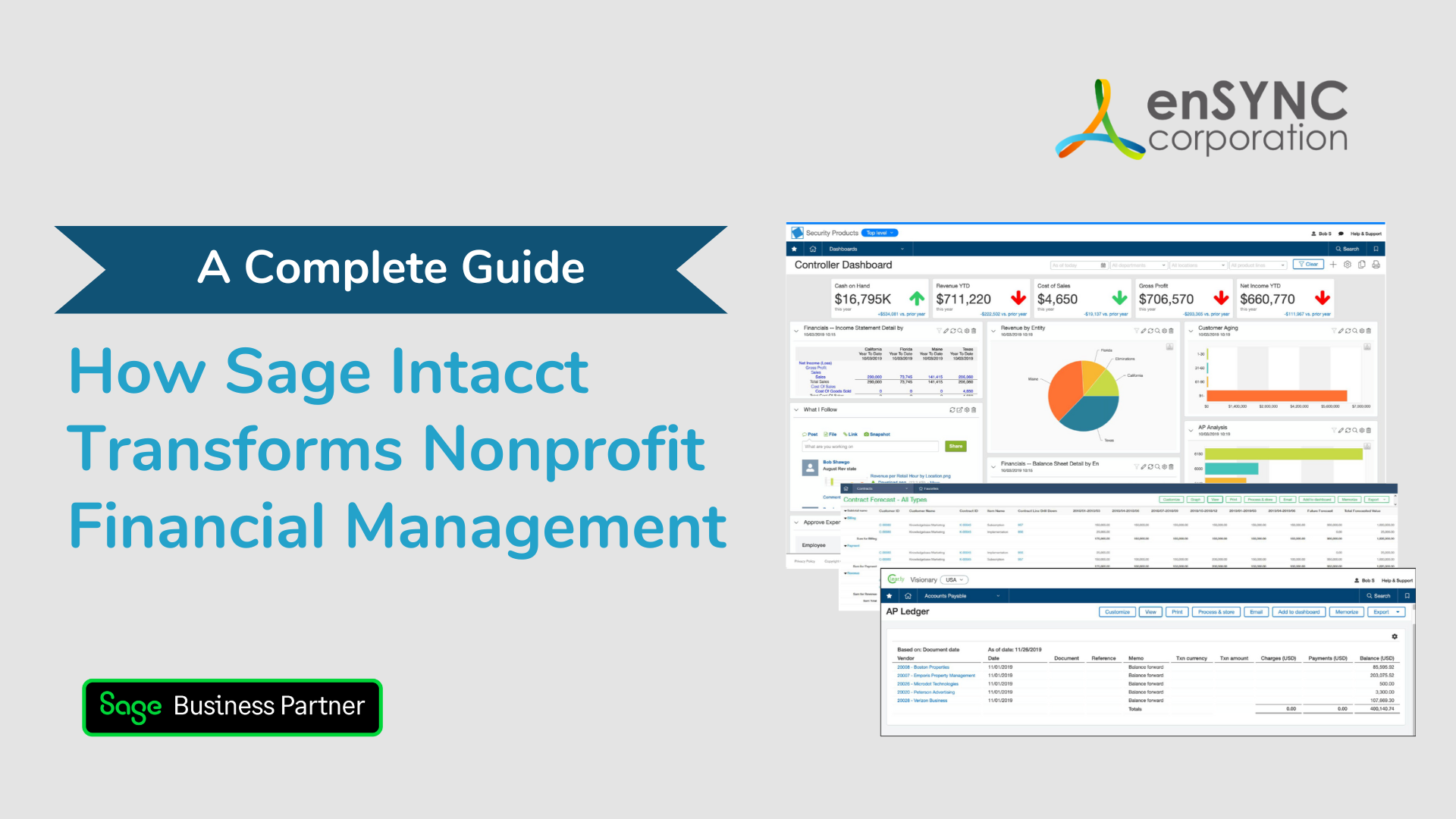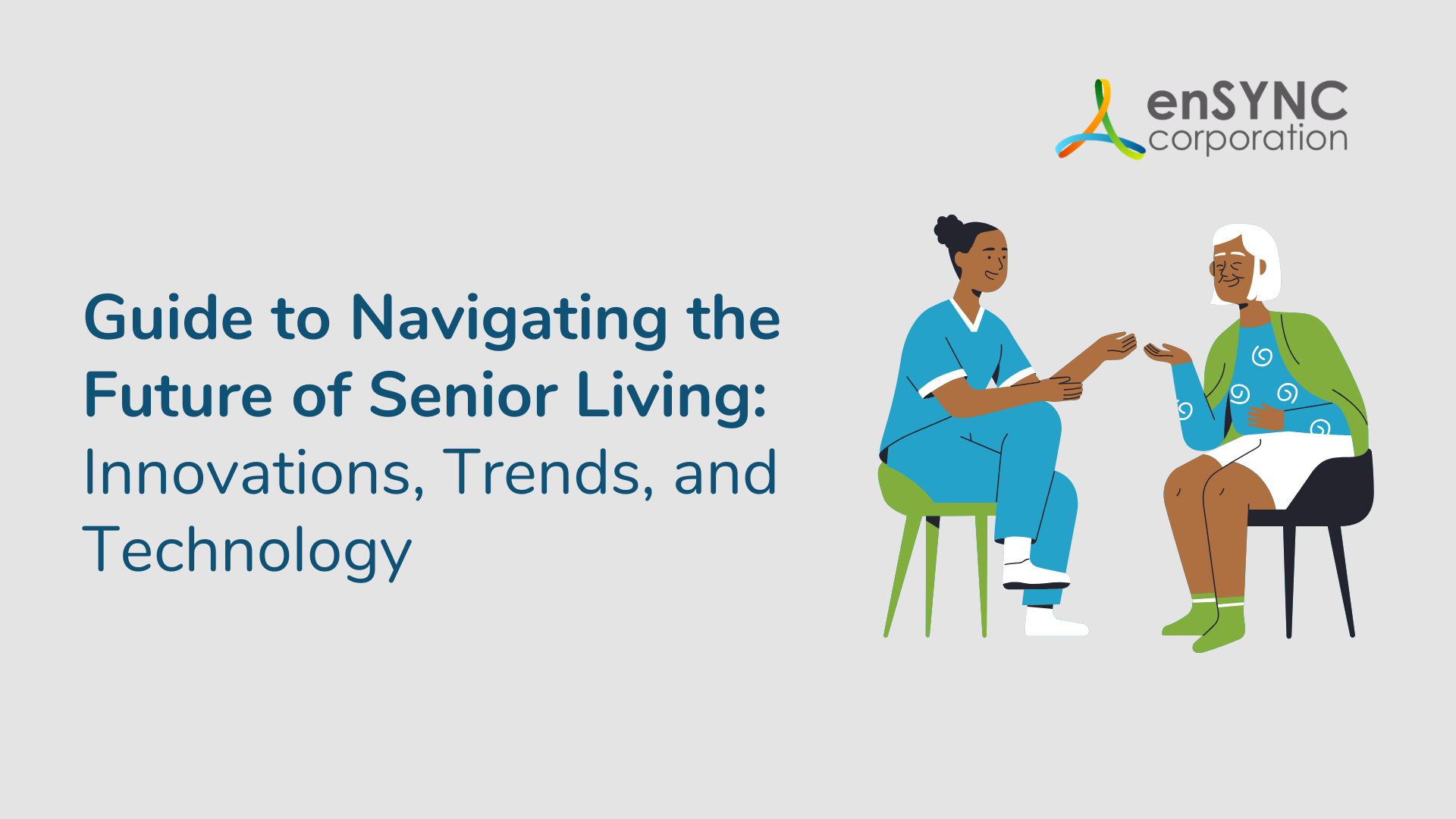Technology & digital transformation | Industry insights | Nonprofits & associations
2022 Technology Trend Report for Nonprofits and Associations
March 27, 2022
|
Nonprofits and associations matter to the economy and social welfare of the United States. According to a National Center for Charitable Statistics report from 2019, nonprofits contributed an estimated $1.047 trillion to the economy and comprised 5.6 percent of the country's gross domestic product (GDP). Moreover, in terms of annual growth, associations grew at a rate of 2.6 percent between 2016 and 2021, and are expected to reach a market size of $28.5 billion during 2022.
These growth trends are expected to continue, bolstered by technological innovation and digital transformation. This report outlines critical trends in technology nonprofits and associations are leveraging to streamline operations, generate more income, and maximize their impact on the communities they serve.
Trend #1: Increased social media presence
The use of social media increased dramatically in 2020 due to COVID-19 policies, and the trend is expected to continue throughout 2022. However, lockdowns and other government policies continue to limit in-person and group interactions. These restrictions on in-person contact have had a particularly devastating impact on nonprofit, social welfare, and community organizations — especially those that serve at-risk populations.
Social media is increasingly being used to bring people together in the digital environment. For example, messaging services on Facebook give organizations the ability to offer one-on-one counseling. Private and public groups are created for users to share experiences and offer support. Instead of holding physical events, organizations are using live streaming video to substitute for conferences and workshops. In addition, revenue-generation tools are available to drive donor engagement and boost revenues, allowing organizations to maximize their overall impact.
With dozens of social media platforms available on the internet today, organizations can target their audience according to factors that include demographics, location, and special interests. The most common services include:
With nearly three billion users across the world, Facebook (now owned by parent company Meta) is one of the most popular platforms used by nonprofits and associations to build their communities.
Facebook’s advertising services, Groups feature, revenue-generation tools, and messaging services give organizations an environment that allows them to carry out most digital activities in a unified environment. In addition, Facebook enables organizations to monetize live events with their Paid Online Events feature that allows them to create, charge, promote, and host events in one place.
YouTube
As one of the original social media networks, YouTube dominates the video publishing space. Nonprofits and associations use the platform to publish long-form content such as conferences and lectures in addition to shorter videos that provide information, spread awareness, share news, and promote events.
Like Facebook, YouTube launched a live streaming service that gives organizations the ability to hold events and charge guests upon registration. The company also offers YouTube Premiere, a service that enables users to schedule upcoming broadcasts that can feature a combination of live and pre-recorded content.
Acquired by Meta in 2012, Instagram recently surpassed two billion monthly active users in 2021. The image-focused platform gives nonprofits and associations a highly visual way to post recent news, upcoming events, and key messages.
Instagram stories — a feature that allows users to post short-form videos — gives organizations an additional opportunity to showcase news, events, and other activities. In addition, the stories feature was recently upgraded to allow users to add links, giving them the ability to share resources and information that can engage their communities. While external links cannot be placed within posts, applications like Linktree allow users to link to a page with a curated list of multiple links to content located elsewhere on the internet.
Twitter provides numerous tools for building a strong community. For example, organizations can tweet news and events, participate in active chats, and retweet valuable content. In addition, Twitter’s Lists feature offers a powerful way to group hashtags, keywords, people, and related groups, giving organizations a comprehensive view of their industry.
TikTok
With its short-form content, ease of use, and IP licensing agreements with music labels and artists, TikTok quickly skyrocketed in popularity during 2020 with over 2 billion mobile downloads. Nonprofits and associations, such as the World Health Organization, use the platform regularly to publish key messages regarding issues critical to their mission. Other popular activities on TikTok include posting videos that promote events, publishing news, and creating challenges that engage users.
Trend #2: Improved organizational visibility
Visibility provides organizations with a clear picture of financial activity, operational efficiency, and employee performance. With technology as a driving factor, nonprofits and associations are increasing visibility in the following ways:
Access to Real-Time Data
Monthly and quarterly reports only provide a limited view. To address the need for increased visibility on a daily basis, organizations are using modern software that provides them with real-time data to make decisions based on current financial information.
Access to real-time data is more critical than ever in today’s rapidly changing economic environment. Business shutdowns and supply-chain issues have led to increased uncertainty. By having access to KPIs derived from real-time data, executives can pivot their strategy when needed to address current problems. In uncertain times, this flexibility is crucial to navigate critical challenges.
Full-Featured CRM Applications
Nonprofits and associations that use customer relationship management software (CRM) are maximizing new and innovative features offered by these applications. Modern CRMs provide task scheduling, email automation, alerts, advanced contact management, web publishing, event management, marketing features, and communication tools. When used together, all these features are helping organizations enhance communication efforts, boost their marketing strategy and improve visibility.
Moving to the Cloud
Streamlining business processes is one of the most significant benefits of using cloud-based software. To avoid complexity, software that integrates and shares data can help reduce data entry, administration, and other redundant tasks. Organizations are also moving applications to the cloud to consolidate data in one place and increase accessibility to anyone with an internet connection.
Using AI-Powered Applications
Applications integrated on the cloud are leveraging artificial intelligence (AI) to automate processes in modern accounting and CRM applications. AI-powered applications also provide real-time insights such as donor forecasting, opportunity insights, sales overviews, and lead scoring.
Trend #3: Increased cross-border transactions
While physical borders have mostly remained closed, digital borders remain open. Advanced accounting applications have simplified cross-border transactions with multi-entity and multi-currency tools that automate financial consolidation for nonprofits and associations that operate multiple entities in numerous locations.
Managers are also quickly creating and reconciling inter-entity transactions to get a consolidated view of performance across the organization. In addition, advanced reporting allows them to drill down into individual locations and programs with granular details about expenses and transactions that automatically draw data from multiple departments.
Trend #4: Automated reporting that saves time and increases accuracy
Experimental development tools like automatic reporting have now gone mainstream. Modern nonprofit and association cloud accounting systems now make automated reporting easy under a unified interface. Besides saving time, new reporting capabilities give managers the ability to create reports in formats that can be easily read by anyone in the organization — from members of the finance team to board members to administration staff.
Trend #5: Increased engagement with email marketing
Email marketing is a broader trend that has been leveraged by enterprises in almost every industry. Along with engaging subscribers, carefully crafted email messages can increase virtual engagement on websites and promote content sharing on social platforms. Besides driving business initiatives, strategically-written email content helps build authority and trust with an audience, and that can translate to more donations and increased membership.
A Note About Email Marketing Metrics in 2022
The recent release of Apple iOS 15 triggered concerns with some email marketers about artificially high open rates. The upgrade presented users with a choice to “Protect Mail Activity” that, when activated, uses tracking pixels that sync with a remote server and make it appear as if the users are always opening the messages.
According to Tech for Campaigns, if the average unique open rate is 25% and 40% of readers use Apple Mail, the open rate may artificially increase from 25% to 55%. As a result, marketers are now looking at donation and click-through rates as measures of success.
Types of Marketing Emails
Organizations have evolved their email marketing strategy to include a variety of messages that include:
Welcome Emails
Welcome emails typically confirm subscription to a list, provide additional information about the organization, and outline what to expect in future messages. Other information in welcome emails can include key organizational contacts, team member introductions, social media links, product or service offerings, and ways to donate.
Newsletters
Typically sent on a daily, monthly, weekly, or monthly basis, newsletters usually contain news, announcements, and upcoming events. In addition, many organizations also include entertaining content such as advice, tips, and stories to keep members engaged and looking forward to the next message.
Thank You Emails
Thank You emails can be sent after a member or customer engages in a way that benefits the organization. The most common types of Interactions that can trigger a thank you message include a donation, the purchase of a product or service, or event attendance. In addition, thank you emails can provide sharing links that users can post on social media to share their experiences with members of their network.
Transactional Emails
Transactional emails typically confirm or facilitate an activity with the organization. These can include event registration confirmations, appointment reminders, sales receipts, and updates to business policies.
Lead-Building Emails
Lead-building emails aim to convert leads into donors or customers. Nonprofits and associations typically use these messages to include additional information about the organization, communicate their mission, and share stories about the communities being served.
Automated/Triggered Emails
Automated or triggered emails are tools provided by modern CRMs that send messages when certain events take place, including:
- New email list subscriptions
- Visits to a specific website page
- Visits by leads employed by a specific company or industry
- Visits by leads in a particular location
- Birthdays and anniversaries
- Downloads of an eBook or registration for a webinar
Besides enabling organizations to target the most relevant users, automated emails also save time and reduce administrative tasks. In addition, most automated email workflows offer options to create specific sequences that help move users along the conversion process.
Trend #6: New strategies to engage donors and drive fundraising campaigns
With limited opportunities for in-person meetings and events, nonprofits are increasing their fundraising efforts with new online strategies. These include contests on social media and peer-to-peer campaigns where supporters are mobilized to solicit other users for donations. Other emerging trends include donation buttons on social media pages and recruiting influencers to post information on their news feeds.
Trend #7: Fast and easy ad hoc reporting
Executives responsible for making critical decisions are no longer limited by waiting for monthly or quarterly reports. Cloud-based nonprofit and association financial management software now allows managers to create reports that provide an accurate picture of what is happening in the organization using real-time data.
Along with simplifying reporting procedures, modern financial software applications offer innovative tools to “slice and dice” data to create customized reports that drill down to specific parts of the organization. Besides enhancing decision-making, real-time reporting also gives executives the flexibility to pivot their strategy when required.
Trend #8: More ways to donate with applications like AutoDraft, Paypal, Cash App, Venmo, and Cryptocurrency
Making the donation process as easy as possible is critical to boosting revenues. Social media platforms have simplified the process with donation buttons that can be added to pages and integrated into posts. In addition, popular applications like AutoDraft, Paypal, Venmo, and Cash App give donors one-click options that improve the donor experience on both desktop and mobile devices.
Many organizations have also started accepting cryptocurrency donations such as Bitcoin, Litecoin, and Ethereum. Cryptocurrency donations give many donors the opportunity to support an organization while saving on capital gains tax. Accepting cryptocurrency donations is also more accessible than ever before with new services such as The Giving Block that simplify the conversion of cryptocurrency donations to regular currency such as the US dollar or euro.
Trend #9: Integrated software systems
Poorly integrated systems often waste time and resources due to duplicated data entry and redundant tasks. In contrast, integrated financial management and accounting systems share data from pipelines that connect to other departments, including payroll, grant management, budgeting, donor management, and fundraising. Besides saving time, integrated systems combine multiple data sources to produce customized reports that show how the organization is performing as an entire unit.
Trend #10: Improved board member reporting
Producing reports for board members leading up to an important meeting can be a stressful experience for your finance team. Advanced reporting tools available in integrated financial applications provide dashboards that display KPIs, graphs, and charts that can facilitate decision making — in less time than legacy reporting procedures.
Trend #11: Eliminated data silos
Integrated software and cloud services solutions share information across the organization and help eliminate the dreaded data silos that divide departments. Cloud-based financial management software keeps all data in one system. This eliminates the need for extra spreadsheets, duplicate data entry, and the need to perform repetitive mundane tasks that waste time. Two common warning signs of data silos include:
Ineffective Decision Making
Managers require current information from multiple departments when making decisions that impact the entire organization. Data silos block information from flowing to upper levels where it can be factored into the decision-making process.
Collaboration Issues
Nonprofits and associations depend on collaboration between departments. Some employees may feel unable to carry out specific projects without relevant information from other departments. When projects are delayed or employees feel unprepared, this may be due to a data silo preventing the flow of information.
Cloud-based software that integrates easily solves data silo issues by blending data from different business units to provide deeper insights, improve collaboration, and enhance decision making.
Trend #12: Comprehensive reporting that combines financial and operational performance data
Unlike most profit-seeking businesses, charitable organizations and associations are focused on maximizing stakeholder impact and achieving their mission. However, since most reporting focuses on revenue and expenses, it does not provide the operational insights required by management to make effective decisions.
Modern financial management systems have solved this issue by bringing dashboards and reports together in a single environment. By putting all this information in one place, managers can present a more accurate picture of financial and operational performance data.
Trend #13: Virtual events that engage current members and expand your audience
Virtual and hybrid events have grown considerably since 2020, and this trend is likely to continue. However, online workshops, fundraising drives, online learning, and conferences lack the human element in-person events provide.
To address that problem, nonprofits and associations can boost the quality of their content and upgrade the production value of their events. By delivering more interactive event experiences, marketing teams can increase community engagement, recruit prospective volunteers, and drive fundraising efforts.
Trend #14: Employing a hybrid workforce
Government mandates forced many organizations to send workers home, resulting in the need to rapidly streamline workflows and business processes offsite. Now that many mandates are being lifted, many businesses are embracing a new model that blends remote work with in-person meetings when required. Some advantages of the hybrid model include:
Reduced Costs
Cost savings vary between organizations, however most organizations have experienced a net cost saving by shifting to a hybrid model. For organizations, most of the savings come from a decreased need for office space, equipment, and supplies, while employees have reduced expenses from transportation, clothing, and meals.
Better Work-Life Balance
The hybrid model gives both workers and managers more flexibility, giving everyone the freedom to balance a personal routine with their work. In addition, most employees are happier without the stress of a commute and can spend more time with their friends and family.
Improved Employee Relationships
Seeing the same people each day for up to ten hours per day (or more) can be stressful. The hybrid models take much of that pressure off, allowing employees to appreciate their time together when collaborating on work-related projects.
Increased Productivity
A recent California-based survey observed that productivity increased 47 percent when employees worked from home. Reasons for that productivity increase may vary, however for most employees, remote working from their own space is more comfortable and gives them the focus needed to be more productive.
Trend #15: Embracing a fully digital workplace
Most organizations were unprepared for a fully online work environment in early 2020. In the early stages of COVID-19 restrictions, many “lifted off” into cyberspace with the idea that they would soon be able to “land” back into their physical offices at some point. Instead, the weeks turned into months, and by 2021, technological innovation permanently changed how most organizations operate.
Automation and AI are now being embraced to augment the skills of a human workforce. Cloud-based integrated software eliminated data silos and improved collaboration. The increased transparency improved cohesion between leaders and employees, enabling everyone to focus with increased clarity on the organization’s goals and objectives.
Conclusion: Looking forward to 2022 and beyond
Technological innovation has been central to the evolution of nonprofits and associations since 2020. Organizations are increasingly using innovative digital tools that redefine how employees collaborate and communicate within the organization and outside stakeholders.
While navigating the challenges of the previous years was difficult, technological innovation has ultimately led to the creation of a unique environment that was superior to the physical office in terms of functionality, performance, and culture. These emerging trends are expected to continue, lighting the path for nonprofits and associations as they leverage technology to fulfill their mission and maximize their impact on the communities they serve.
Recent Posts

Sage Intacct vs. Competitors: Finding the Best Accounting Solution for Your Nonprofit
Choosing the right accounting software is a critical step for any organization — and a deeply personal one, too. How to choose the accounting...

How Sage Intacct Transforms Nonprofit Financial Management: A Complete Guide
Staying on top of financial management is crucial for all businesses, especially nonprofits. Nonprofits often have limited resources and handle...
Enjoying our blog?
At enSYNC, we want to empower associations and nonprofits to make well-educated decisions. If you want our industry knowledge (and other free guides) sent directly to your inbox, fill out the form below.


